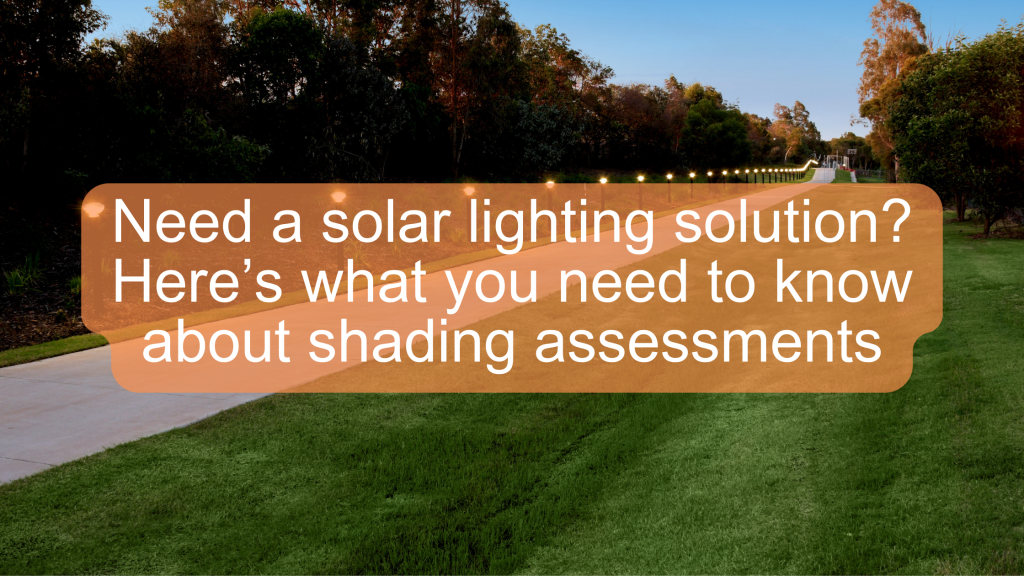
Need a solar lighting solution? Here’s what you need to know about solar lighting shading assessments
There are a lot of factors that go into ensuring your solar lighting system will provide reliable and constant light all year round. One of the most important is planning for shading through a shading assessment.
Without a comprehensive shading assessment, you can waste money on the wrong solar lights, your lights can fail, the battery life of your solar lights can be severely compromised and you can be left in a position where your warranty is voided.
Before your lighting design is created and your solar lights are chosen, your lighting supplier will need to carry out a comprehensive shading assessment to determine the right solution for your project.
Here’s what you can expect from your solar lighting provider when it comes to a shading assessment.
Weather and surrounds assessment
Every solar light location needs to be checked for shading, and assessing for when the sun tracks lower to the north in the middle of winter, as well as the sun tracking directly overhead in summer.
For most of mainland Australia, the most challenging time of year for solar lighting is during winter when the days are shortest and the nights are longest. In the tropical northern locations however, the most challenging times for solar lighting are during the summer monsoon months.
Your lighting supplier will assess the location of each of your solar lights to ensure that solar panels receive direct sunlight all day, all year round, or use measures to enable the solar lighting to cope with the shade and still provide reliable all-night light such as setting up your solar lights with different power model settings.
Any shading from surrounding trees, buildings or fencing is also accounted for in your shading assessment.
Selecting the correct power model
To select the correct power model for your solar lights in their specific location, your solar lighting supplier should work with;
- Google Earth Street View;
- any location photos and videos you provide; or
- conduct a site visit to establish the amount of shade at each location.
To ensure your solar lighting is treated as mission critical your provider should also use accurate weather and solar radiation data as well as running system sizing and reliability simulations so that your solar lights remain operational even when the sun is not shining.
For the majority of locations in Australia, the power model for your solar lights is selected based on the sun’s path in the proposed installation position over the winter months. This is because winter generally provides the worst-case scenario i.e., the highest amount of solar energy your lights can capture during the shorter daylight hours. For the far North tropical areas, the power model is based on the monsoonal summer season.
Future shading assessment
Your shading assessment will also need to consider any potential future shading from shrubs, bushes and trees in proximity to the solar lights. It’s surprising how quickly trees and shrubs can grow in a few years which can significantly impact the reliability of your solar lights.
Shading assessments are imperative to ensuring compliant, reliable and constant all-night light. With a comprehensive shading assessment, you’ll have confidence that your solar lighting design is of the highest standard and will stand the test of time.
